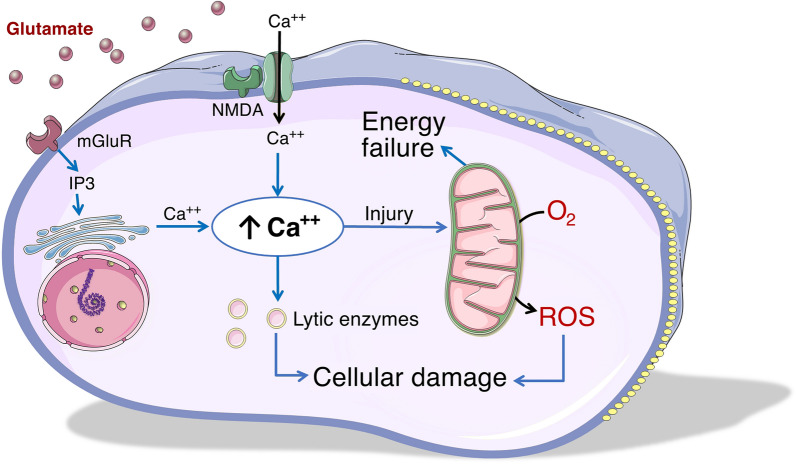Fig. 1.
Role of calcium in reperfusion injury. The neurotransmitter glutamate is released by cells following ischaemic injury and binds to two main receptors on the cell membrane: the mGlu receptor (left), which via an intracellular mediator called IP3 releases calcium stores from the endoplasmic reticulum, and the N-methyl-d-aspartic acid (NMDA; top), which opens a channel on the cell membrane letting calcium in. The resulting excess in intracellular calcium levels activates calcium-dependent lytic enzymes, such as caspase, proteases, and phospholipases, which cause damage to the cell structure; in addition, calcium enters the mitochondria and disrupts the electron transport chain. The result is production of reactive oxygen species (ROS) from oxygen, which further aggravate intracellular damage, and energy failure, inducing a vicious cycle leading to cell injury and death

